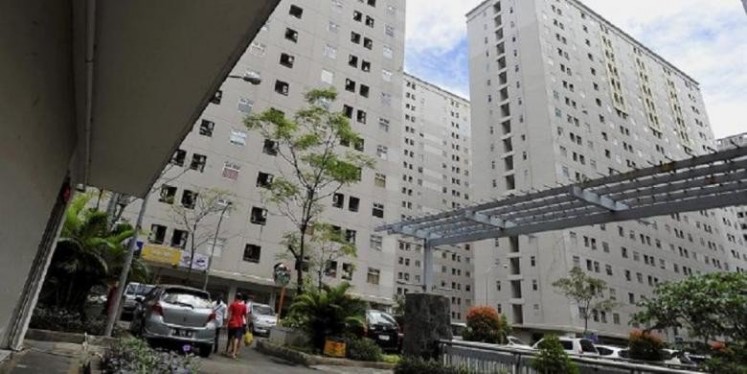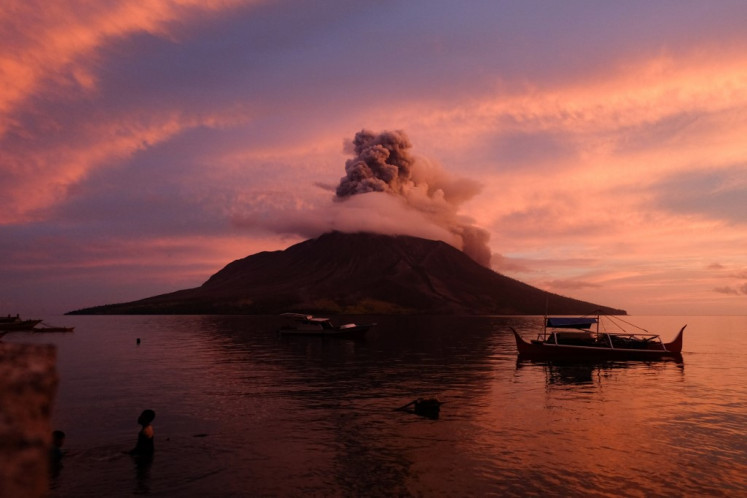City turns an appreciative eye on wall art
In the past few years, mural paintings in public spots, such as on walls along highways and pillars under flyovers, have been given more honor from city dwellers and administrators alike
Change Size

In the past few years, mural paintings in public spots, such as on walls along highways and pillars under flyovers, have been given more honor from city dwellers and administrators alike.
Murals or paintings on public walls, ceilings and other large spaces around Jakarta may be decorative, feature-themed characters, or modified forms of fonts (which is commonly called graffiti).
Toto, a resident of Bojong Menteng, Bekasi, on Friday afternoon welcomed over 20 young mural and graffiti artists to paint the four walls of his 400-square-meter basketball court.
"Their activities are more positive than those of young people who abuse alcohol or drugs," said 46-year-old Toto, father of three, while observing the wall-painting activity. This is the second year Toto has welcomed these young artists into his backyard.
His 17-year-old son, Deni Saputra, said, "Although I am not a mural artist, I enjoyed looking at murals because they genuinely expressed their creators' thoughts and feelings."
Deni, who is a student at state high school SMAN 2 Bekasi, said he fully supported mural artwork, even those on public spaces and believed they should be regarded as cultural assets.
"The works should not be too sexually explicit, however. Because they are displayed in a public space, certain standards should be followed."
Wicaksono, a 27-year-old motorcyclist who finds the murals a pleasant distraction while sitting in traffic jams, said, "Obscenity is not in the works themselves, but rather in the mind of the observer. I don't mind a little bit of *obscenity' as long as the creation was meaningful."
Wicaksono travels on a daily basis from his home in Bekasi to his office in North Jakarta and said he liked those with a moral message as well as those which are simply decorative.
"What I do not like are scrapes and nicks in public property done by irresponsible kids who are only fooling around."
Erje, a graffiti artist when he isn't a bank employee, said the public should be able to distinguish between high-quality murals and vandalized property.
"There is a difference between mural artists, who want to entertain audiences by decorating dull, vacant walls in public spaces, and others who just want to vandalize public property," said Erje, who started painting in high school and is now in his 30s.
Caf*s, urban clothing boutiques and business offices have begun to notice mural work and are using it as a form of interior design.
In the past several years, the city administration has also begun to appreciate the artists' contributions.
Last year, the Jakarta Police invited dozens of mural artists to paint pillars under flyovers in the capital's five municipalities with public service announcements.
"Basically, the administration supports public participation in beautifying the city as long as they ask for permission," assistant to city secretary for development, Sarwo Handayani, told The Jakarta Post on Saturday.
Sarwo acknowledged there was not any bylaw specifically regulating mural artwork on public property.
"Paintings that are violent and sexually obscene may be violating the 1988 bylaw on public order."
Sarwo, who previously was head of the City Park Agency, said mural artists should submit their artistic concepts to the administration along with a letter requesting permission to paint.
"Artists who request permission will not be fined," said Sarwo, adding the permit would be issued within a month, as long as the design of the painting did not violate the bylaw on public order.
According to Sarwo, the administration had not specifically listed public places where murals are permitted.
"We determine allowable public locations on a case-by-case basis."
She acknowledged the pillars under the flyover along Jl. Yos Sudarso, North Jakarta, were a popular spot for artists.
"The North Jakarta mayor has allowed mural artists to paint there to improve the aesthetics of the area."
Erje said he was happy with the acknowledgment.
"The authorities have been more permissive this past year. When they remove old paintings from public property, they only remove the ones of poor quality," Erje said.
A 22-year-old graffiti artist, Said A.M., known as Xait, agreed, saying officials were more appreciative of their paintings these days.
Xait, a fine arts student at Trisakti University, said some officers allowed him to continue his work after they saw his concept.
Nevertheless, Xait and many of his colleagues acknowledged they still preferred the cover of night to paint.
"Many of us enjoy the adrenalin rush.
"Besides, it is uncomfortable to paint during the day and be watched by the motorists. I don't want to cause a traffic jam," Xait said.
However, another mural painter, who goes by The Popo, said mural artists who have requested permission could still be subjected to bribery and harsh treatment by the police and public order officials.
The Popo, whose real name is Ryan Ryry Ryadi, said the murals painted on the pillars under Kuningan flyover in South Jakarta did not last long, even though the artists had received permission from the city park agency. .
"A week after the murals were finished, they were covered to make room for advertisements. It is heartbreaking to discover the administration prioritizes receiving money from commercial interests over preserving our art.
"The city administration needs to provide more locations for us to express ourselves and allow our works to remain intact," he added.
The 25-year-old mural painter said the process should be seen as a dialogue among the public, the authorities and the painters.
The Popo, who two years ago was slapped by a police officer when he was painting a wall in Jl. Prapanca, South Jakarta, said he always asked for permission from the property owner of the wall he planned to paint -- whether it was private or public property.









